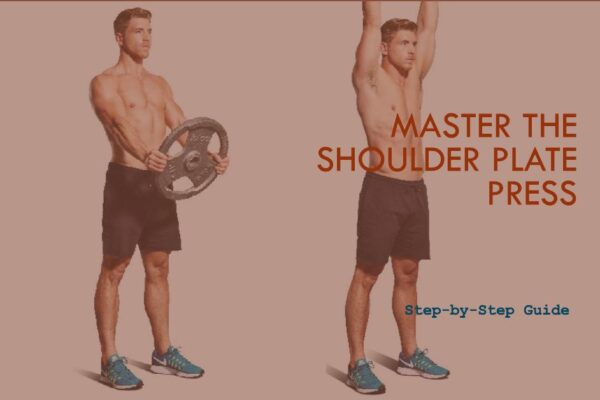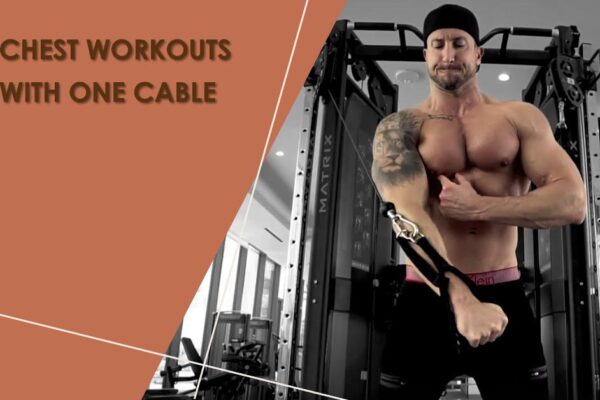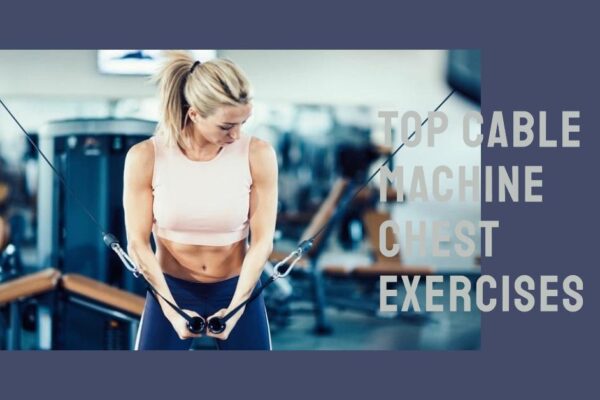When it comes to targeting the lats with a seated row machine, the choice of grip can make a significant difference in muscle engagement and the overall effectiveness of the exercise. Mastering the seated row machine is a cornerstone of any comprehensive back workout. However, what many gym-goers may not realize is that the way you grip the handle can dramatically alter the muscles activated during the exercise.
In particular, the various grips available on the seated row machine offer distinct advantages for targeting the latissimus dorsi, or “lats,” which play a critical role in achieving a well-developed, balanced back.
In this guide, we’ll discuss the different grips on the seated row machine and how they can be strategically utilized to optimize lat engagement. Whether you’re aiming to build width, thickness, or overall strength in your back, understanding the impact of grip variations is key to maximizing the benefits of this fundamental exercise.
Let’s explore how slight adjustments in grip position can unlock new pathways to sculpting and strengthening your lats, ultimately enhancing your back training regimen.
What is a Seated Row Machine
The seated row machine, a staple in gym settings, is designed to target the muscles in the upper and middle back. Its user-friendly setup allows individuals to perform rowing motions, promoting strength and stability.

Importance of Grip Variation
Grip variation is not just a matter of preference; it significantly influences the muscles brought into play during workouts. Different grips can emphasize specific areas, contributing to a more comprehensive and effective training routine.
Diversifying your grips not only prevents monotony but also provides a more well-rounded workout. It promotes a balanced development of muscle groups, reduces the risk of overuse injuries, and challenges your body in new ways.
Muscles Worked by Seated Row Machine
The seated row machine is a versatile piece of equipment that primarily targets the muscles of the back, along with secondary engagement of other muscle groups. Here’s an overview of the muscles worked by the seated row machine:
- Primary Muscles Targeted:
- Latissimus Dorsi (Lats): The primary focus of the seated row exercise, the lats are responsible for adducting and extending the shoulder joint. They contribute to the width and overall strength of the back.
- Secondary Muscles Engaged:
- Trapezius: Both the middle and lower fibers of the trapezius are activated during the seated row, supporting scapular retraction and shoulder stability.
- Rhomboids: These muscles, located between the shoulder blades, aid in scapular retraction, helping to maintain good posture and shoulder health.
- Biceps: The biceps brachii act as synergistic muscles during the seated row, particularly in movements involving elbow flexion.
Understanding the specific muscle groups targeted by the seated row machine is crucial for tailoring workouts to achieve balanced back development and overall strength.

Seated Row Machine Different Grips
The seated row machine offers a variety of grips, each targeting the back muscles in slightly different ways. Here’s an overview of the different grips commonly used on the seated row machine:
1. Overhand Grip (Wide Grip):
This grip involves holding the handle with your palms facing down and spaced wider than shoulder-width apart. The overhand wide grip emphasizes the outer portion of the lats, contributing to increased width in the back. It also engages the rear deltoids and the lower and middle trapezius muscles.
How to Perform:
- Adjust the machine for a wide grip attachment and set the seat to the appropriate position if necessary.
- Sit on the machine with proper posture, keeping your back straight and chest up.
- Grasp the wide grip handle with both hands using an overhand grip, ensuring your hands are spaced wider than shoulder-width apart.
- Start with your arms fully extended, then pull the handle towards your lower chest while focusing on engaging the outer portion of your lats and rear deltoids.
- Retract your shoulder blades as you pull the handle, and maintain a controlled movement throughout the exercise.
- Slowly release the handle back to the starting position, fully extending your arms, and repeat the motion for the desired number of repetitions.
By performing the overhand grip (wide grip) seated row with proper technique and control, you can effectively target the outer lats and rear deltoids while promoting overall back strength and development.
2. Underhand Grip (Close Grip or Reverse Grip):
With this grip, your palms are facing up and positioned closer together on the handle. The underhand grip targets the lower lats and the mid-back, providing a focus on thickness and overall back development. Additionally, it places more emphasis on the biceps due to the supinated hand position.
How to Perform:
- Adjust the machine for a close grip attachment and set the seat to the appropriate position if needed.
- Sit on the machine with good posture, ensuring your back is straight and your chest is up.
- Grasp the close grip handle with both hands using an underhand grip, maintaining a grip that is closer than shoulder-width apart.
- Begin with your arms fully extended, then pull the handle towards your lower chest while focusing on engaging the lower lats and mid-back muscles. The underhand grip also places additional emphasis on the biceps due to the supinated hand position.
- Retract your shoulder blades as you pull the handle, and maintain controlled, deliberate movements throughout the exercise.
- Slowly release the handle back to the starting position, fully extend your arms, and repeat the movement for the desired number of repetitions.
By performing the underhand grip (close grip or reverse grip) seated row with proper form and control, you can effectively target the lower lats, mid-back, and biceps, contributing to overall back and arm strength and development.
3. Neutral Grip (V-Bar Handle):
Using a V-bar handle, your palms face each other in a neutral position, not fully pronated or supinated. This grip variation emphasizes the middle back, particularly the rhomboids and the lower trapezius. It provides a balanced engagement of the lats, teres major, and rear delts while also involving the biceps to a lesser extent.
How to Perform:
- Adjust the machine by attaching a V-bar handle and set the seat to the appropriate position if necessary.
- Sit on the machine with proper posture, ensuring your back is straight and your chest is up.
- Grasp the V-bar handle with both hands using a neutral grip, with your palms facing each other.
- Start with your arms fully extended, then pull the handle towards your lower chest while focusing on engaging the lats and the middle back, particularly targeting the rhomboids and lower trapezius muscles.
- Retract your shoulder blades as you pull the handle, and maintain controlled, deliberate movements throughout the exercise.
- Slowly release the handle back to the starting position, fully extending your arms, and repeat the motion for the desired number of repetitions.
By performing the neutral grip (V-bar handle) seated row with proper technique and control, you can effectively engage the lats, middle back, and supportive musculature, promoting comprehensive back strength and development.
4. Single-Arm Grip:
This grip involves using one hand at a time, allowing for unilateral movement. Performing the seated row with a single-arm grip helps address muscle imbalances and enhances core stability. It targets the lats, rhomboids, and trapezius muscles while requiring increased stabilization from the core and obliques.
How to Perform:
To perform the single-arm grip seated row on a machine, follow these steps:
- Sit on the machine with a straight back and chest up, adjusting the seat if necessary to ensure proper alignment.
- Grasp the handle with one hand while keeping the other hand firmly on your side or resting on a support on the machine.
- Start with your arm fully extended, then pull the handle towards your lower chest while focusing on engaging the targeted back muscles on the pulling side.
- Retract your shoulder blade as you pull the handle and maintain controlled, deliberate movements throughout the exercise.
- Slowly release the handle back to the starting position, fully extend your arm, and repeat the movement for the desired number of repetitions.
Performing the single-arm grip seated row helps to isolate and strengthen each side of the back independently while promoting balance and stability. Remember to maintain proper form and control throughout the exercise for maximum effectiveness and safety.
By incorporating these different grips into your training regimen, you can effectively target various areas of the back, promoting balanced development and ensuring comprehensive muscular engagement during your seated row machine workouts.
How to Perform Seated Row Machine
A. Set-Up and Equipment Needed
- Seat Position: Adjust the seat height on the machine so that when you sit down, the handles are at mid-chest level.
- Handle Attachment: Depending on the specific seated row machine, attach the desired handle (e.g., straight bar, narrow grip, V-bar) to the cable.
- Weight Selection: Choose an appropriate weight for your fitness level and training goals by setting the weight stack.
B. Step-by-Step Guide
Here’s a detailed breakdown of how to execute the exercise correctly:
- Initial Position
- Sit comfortably on the machine, ensuring your back is straight and your chest is up.
- Place your feet flat on the footrests and grab the handles with your arms fully extended in front of you.
- Execution of the Exercise
- Pulling Phase:
- Keeping your back straight, pull the handles towards your lower chest while retracting your shoulder blades.
- Focus on leading the movement with your elbows and squeezing your back muscles at the end of the movement.
- Controlled Release:
- Slowly extend your arms back to the starting position, feeling the stretch in your back muscles.
- Pulling Phase:
- Breathing Tips
- Inhale as you extend your arms and prepare for the next repetition.
- Exhale as you pull the handles towards your body, maintaining controlled breathing throughout the exercise.
Remember to maintain proper posture and avoid using momentum to ensure that the targeted muscles are effectively engaged. Additionally, a smooth and controlled motion is essential for maximizing the benefits of the seated row machine exercise.
Seated Row Machine Different Grips Benefits
- Overhand Grip (Wide Grip):
- Benefits: Emphasizes the outer portion of the lats, contributing to increased width in the back. Also engages the rear deltoids and the lower and middle trapezius muscles.
- Underhand Grip (Close Grip or Reverse Grip):
- Benefits: Targets the lower lats and the mid-back, providing a focus on thickness and overall back development. It also places more emphasis on the biceps due to the supinated hand position.
- Neutral Grip (V-Bar Handle):
- Benefits: Increases the focus on the lats while also engaging the middle back, particularly the rhomboids and the lower trapezius. Provides a balanced engagement of the lats, teres major, and rear delts.
- Single-Arm Grip:
- Benefits: Addresses muscle imbalances and enhances core stability, targeting the lats, rhomboids, and trapezius muscles while requiring increased stabilization from the core and obliques.
By utilizing these different grips on the seated row machine, individuals can effectively target various areas of the back while promoting balanced muscular development and comprehensive engagement during their workouts.
Tips to Maximize Results and Safety
To maximize results and ensure safety while using the seated row machine, consider the following tips:
- Proper Form: Maintain a straight back and chest-up posture throughout the exercise to protect your spine and promote effective muscle engagement.
- Grip Variation: Experiment with different grip variations, such as underhand, overhand, and neutral grips, to target various muscles in the back and arms.
- Controlled Movements: Avoid using momentum to pull the weight and instead focus on controlled, deliberate movements to fully engage the targeted muscles.
- Adjust Seat Position: Ensure that the seat is positioned correctly to align the handles with your lower chest, allowing for a full range of motion without straining the shoulders or back.
- Warm-Up: Before performing heavy sets, warm up the targeted muscles and joints with light cardio or dynamic stretching to reduce the risk of injury.
- Breathing Technique: Exhale as you pull the handle towards your body and inhale as you release it, maintaining a consistent breathing pattern to support exertion and stability.
- Gradual Progression: Gradually increase the weight and intensity of the exercise over time to challenge your muscles and promote strength development while minimizing the risk of strain or injury.
- Monitor Shoulder Position: Pay attention to your shoulder position and avoid rounding or hunching them forward, as this can lead to strain and compromise proper muscle engagement.
- Consult a Professional: If you are new to strength training or have any concerns about your form or technique, consider seeking guidance from a fitness professional to ensure safe and effective performance.
By incorporating these tips into your seated row machine routine, you can optimize your results, minimize the risk of injury, and promote overall safety and effectiveness in your workouts.
Common Mistakes to Avoid
When using the seated row machine, it’s important to be mindful of common mistakes to avoid for optimal effectiveness and safety. Here are some common errors to watch out for:
- Rounded Back: Avoid rounding your back or hunching your shoulders forward during the exercise, as this can lead to improper muscle engagement and increase the risk of strain or injury.
- Using Excessive Momentum: Refrain from using momentum to pull the handle, as this reduces the effectiveness of the exercise by minimizing muscle engagement and increases the risk of potential injury.
- Jerky Movements: Ensure that your movements are smooth and controlled, avoiding sudden jerks or erratic motions, which can strain the muscles and compromise safety.
- Incorrect Grip Position: Be mindful of your grip position and avoid excessively wide or narrow grips, as these can lead to improper muscle targeting and unnecessary strain on the wrists and elbows.
- Inadequate Seat Adjustment: Failing to properly adjust the seat position can limit the range of motion and compromise the effectiveness of the exercise, so ensure the handles align with your lower chest.
- Neglecting Breathing Technique: Pay attention to your breathing pattern and avoid holding your breath, as this can lead to reduced oxygen supply to the muscles and potentially compromise performance and safety.
- Overloading the Weight: Avoid using excessive weight that compromises proper form and control. Gradually increase the weight as you progress to ensure safe and effective strength development.
By being mindful of these common mistakes and focusing on proper form, control, and gradual progression, you can optimize your performance on the seated row machine while minimizing the risk of injury.
Frequent Question Answers
By addressing the following frequently asked questions, we hope to provide clarity and guidance on incorporating the Seated Row machine different grips into your fitness routine. Remember to listen to your body, start at an appropriate level, and gradually progress for optimal results.
| Question | Answer |
|---|---|
| Which grip is best for seated row? | The best grip for the seated row depends on individual muscle targeting preference. Experiment with different grips to find the one that feels most effective for you. |
| Which grip is better for row machine? | The best grip for the row machine varies based on personal comfort and the specific muscles you want to target. Try different grips to determine the most suitable option. |
| What do different grips on rows do? | Different grips on row exercises target various muscles in the back and arms, providing versatility and the ability to focus on different areas of the upper body. |
| Should you use vertical or parallel grips for seated row? | Both vertical and parallel grips can be beneficial for seated rows. Experiment with both to determine which one provides the best muscle engagement for your needs. |
| Does seated row grip matter? | Yes, the grip used during seated rows matters as it can affect muscle engagement and overall workout effectiveness. Experiment with different grips to find what works best for you. |
| Does grip matter in rows? | Yes, the grip used in row exercises matters as it determines which muscles are primarily engaged. Exploring different grips can help diversify your back and arm workouts. |
| Are wide grip seated rows better? | Wide grip seated rows can be beneficial for targeting the upper back muscles, providing a different stimulus compared to other grip variations. |
| Are wide grip seated rows good? | Wide grip seated rows can be good for targeting the upper back and rear deltoids, contributing to a well-rounded upper body strength and muscle development routine. |
| What is the difference between neutral grip and wide grip seated row? | The difference lies in the hand position: a neutral grip has the palms facing each other, while a wide grip involves a wider hand placement on the handle. Each targets different areas of the back and arms. |
Conclusion
In conclusion, the seated row machine offers versatility through different grip variations, each targeting distinct muscles in the back and arms. Experimenting with grips allows for a well-rounded upper body workout, engaging various muscle groups for comprehensive strength development.
Whether it’s the wide grip emphasizing the upper back or the neutral grip targeting different areas, understanding the impact of each grip helps individuals tailor their workouts to their specific fitness goals. By incorporating a variety of grips into your seated row routine, you can achieve balanced muscle development and optimize the effectiveness of your workouts.
Sources
- Reddit, r/Fitness: Seated rows, which grip?
- Mirafit: How to Use a Seated Row Machine
- Healthline: Seated Row: Muscles Used, Common Mistakes
- BarBend: Do Different Row Grips Matter?
- Fitness Stack Exchange: What’s the difference between cable seated rows on a pulley and using the seat?
- Athletic Insight: How to do Seated Row: Variations, Proper Form






Leave a Reply